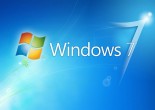As of July 4, 2014, Windows 7 commands 50.55% of the desktop market with just a slim 20% of desktops using Windows 8 or 8.1. There are two reasons for this:
1. Windows 8 is a great tablet solution, terrible desktop solution. With programs designed to be full screen or to share the real estate with just one other program on half, it steps back in time to the days of poor multitasking. The capabilities of the modern processor together with a 27″ screen means Windows 7 is a much better candidate for getting work done. At the moment I am writing this, I have my email in view, this web page to the right, a set of files peeping behind the emails, and Pandora running in the corner. Plus a quick glance at the lower right tells me the date and time. Windows 8.1 desktop can do all this just as well as Windows 7 but it was a mistake to put the metro style first. What is worse, for businesses, no employer wants to see the default tiles on the screen for social networking and shopping. That is not how business is run. So, if Microsoft succeeds in limiting the metro tiles, they will have an acceptable new OS, which brings me to point 2.
2. Upgrades are not offered. The 50% of the users running Win7 are not likely to upgrade to Windows 8. The real market for the program would be the users of XP and Vista. But Microsoft does not offer an upgrade. The only option is to install a fresh copy of the OS and reinstall all the programs. This is a large barrier to sales. If Windows would simply upgrade a system from XP to Win8.1 32 bit, then buying and running the program would be a no brainer. They could easily double the number of users and make a few million in the process. But Microsoft’s decision makers focus on the large enterprise where full time techies use disk images to roll out a few thousand identically-configured desktops. The consumer market does not interest them enough to question their own outdated policies.


